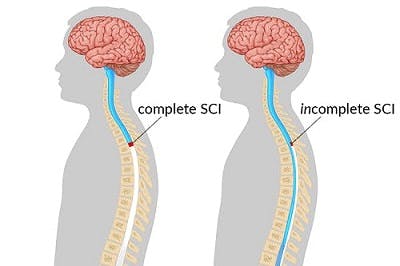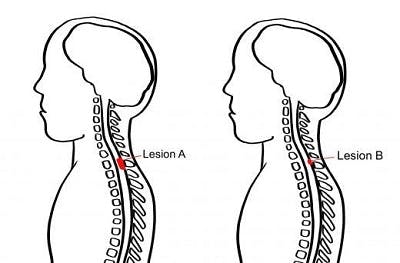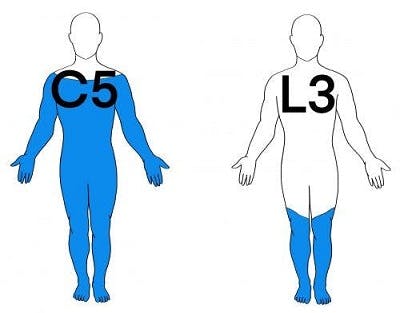Incomplete spinal cord injury recovery time may vary depending on the level of injury, severity, and rehabilitation process. Other factors can also interfere with recovery time including a well-balanced diet and motivation to pursue recovery.
However, incomplete spinal cord injury recovery time is not linear and requires patience and dedication. While some survivors experience significant improvement within the first few months, other individuals will continue to make strides even years after initial injury.
This article will discuss some of the best ways to speed up your incomplete spinal cord injury recovery time and promote healing.
Is Incomplete Spinal Cord Injury Recovery Time Limited?
There is no set timeline for recovery because every spinal cord injury is different and every survivor may experience different outcomes. However, many individuals with an incomplete spinal cord injury experience a spike in recovery during the first 3-6 months post-injury.
Immediately after a spinal cord injury, the central nervous system enters a heightened state of plasticity as it tries to stabilize itself. During this stage, survivors may see significant improvements in their affected limbs such as the arms or legs.
This spontaneous recovery typically plateaus, or slows down, around 12-18 months. However, incomplete spinal cord injury recovery time is not limited to that first year of heightened plasticity. The nervous system is still healing after this stage; it just may take more time and patience to see positive results.
Complete vs. Incomplete Spinal Cord Injury Recovery Time

The spinal cord uses neural pathways to communicate with the brain and muscles. When neural pathways become damaged or destroyed by a spinal cord injury, it can result in loss of sensation, immobility, and other secondary effects.
Generally speaking, the more severe a spinal cord injury, the longer it can take for the nervous system to heal. The less damage to the spinal cord, the higher the chances of a faster recovery. This can be determined by the level of injury, which refers to the lowest region where movement and sensation exist, and whether the injury was complete or incomplete.
In a complete injury, the spinal cord is fully severed meaning there are no existing neural pathways below the level of injury. However, with an incomplete injury the spinal cord is only partially severed and there are spared neural pathways remaining. Spared neural pathways can be strengthened by neuroplasticity, the nervous system’s ability to heal and rewire itself.
Neuroplasticity strengthens existing neural pathways and creates new ones, allowing for better communication between the central nervous system and the body. The more communication is restored, the more possibilities of regaining function like mobility and sensation.
How to Speed Up Incomplete Spinal Cord Injury Recovery Time
Although the spinal cord experiences a temporary heightened state of plasticity after initial injury, it is still capable of rewiring itself even years later. To continuously activate neuroplasticity and optimize your incomplete spinal cord injury recovery time, it’s important to practice high repetition of exercises.
Practicing a skill consistently helps train the nervous system to recognize that skill and strengthen its neural pathways. To increase your recovery time, it’s important to establish a proper rehabilitation regimen. This can include a combination of different therapy exercises such as gait training or hand therapy exercises.
Your therapist is a great resource and can provide you with a suitable rehabilitation plan tailored to your ability level. However, to ensure you stimulate neuroplasticity on a regular basis, it’s important to practice rehab exercises in between your therapy sessions.
To help you stay motivated and achieve high repetition of exercises at home you can use FitMi, an interactive neurorehab device designed to improve full-body mobility. FitMi provides you with exercises based on your ability level and the muscle groups you want to target. It also helps you achieve high repetition of exercises by keeping track of your progress and unlocking more difficult exercises as you improve.
Exercising your affected muscles daily is essential to improve function and speed up your recovery time. However, it’s important to note that in addition to exercise there are other factors that can hinder or promote healing after an incomplete spinal cord injury and affect recovery time. Learning how to manage these factors is important to maximize your chances of recovery.
Factors That Can Affect Incomplete Spinal Cord Injury Recovery Time
Incomplete spinal cord injury recovery time is not linear because it can be affected by a combination of various factors. While some factors are external, meaning they are out of your control, some factors are internal and can be managed with the proper care.
Potential factors that can affect incomplete spinal cord injury recovery time include:
1. Severity
The severity of an injury often determines an individual’s incomplete spinal cord injury recovery time. Less nerve damage usually means fewer functions impaired. Studies show that the less severe an initial injury, the better the recovery outlook.
To help you visualize how severity may vary and affect incomplete spinal cord injury recovery time, let’s take a look at the following illustration of spinal cord lesions.

Lesion A is bigger and will therefore affect more surrounding tissues than lesion B. These tissues can then damage or destroy neural pathways and impair function. The less damage, the faster an incomplete spinal cord injury recovery time.
2. Level of Injury
Another factor that determines incomplete spinal cord injury recovery time is the level of injury. The higher the level of your spinal cord injury, the more areas of your body will be affected and the longer it can take to maximize your chances of having a full recovery.
For example, there may be two individuals with incomplete spinal cord injuries that have the same type of severity. However, of these two individuals one sustained a C5 spinal cord injury which results in paralysis from the shoulders down, while the other sustained an L3 spinal cord injury which causes paralysis from the knees down.

The survivor with an L3 spinal cord injury may recover faster because there are fewer functions impaired. Thus, the lower the level of injury, the higher the chances of speeding up recovery time.
3. Stabilization of the Spinal Cord Immediately After Injury
Majority of the damage caused by a spinal cord injury is a result of secondary processes the body uses to stabilize itself. For instance, after a spinal cord injury the immune system releases an inflammatory response to help stabilize the microenvironment and protect the body. This can result in swelling, cell death, and reduced blood flow.
Excess swelling of the spinal cord can cause spinal shock, which refers to a temporary loss of all reflexes, motor control, and sensation below the level of injury. Spinal shock can last up to a few months post-injury. It’s important to seek emergency medical care to minimize these secondary effects and speed up incomplete spinal cord injury recovery time.
4. Co-Occurring Health Problems
While the previous factors are external factors that are out of your control, there are other contributing health factors that can be managed with the proper help. For example, health conditions such as respiratory complications or chronic pain can make it challenging to practice therapeutic exercises daily and stimulate neuroplasticity. Without neuroplasticity the nervous system cannot rewire itself or heal.
Other health conditions that can lengthen incomplete spinal cord injury recovery time include:
- Obesity
- Leg swelling
- Pressure sores
- Sleep complications
- Certain medications
These conditions can interfere with your rehabilitation process and delay your recovery time. To reduce the risk of developing other certain health conditions after spinal cord injury it’s important to seek proper medical care.
5. Lack of Physical Activity
After a spinal cord injury, many individuals may experience paralysis or become sedentary. Lack of mobility can then increase the risk of pressure sores and other complications that can inhibit recovery time.
Lack of movement also does not boost your physical and mental health. For example, immobility can cause your metabolic rate to slow down and your blood pressure to decrease. This will lower the supply of oxygen-rich blood into your organs.
Movement after a spinal cord injury is crucial to activate neuroplasticity, increase proper blood flow, and lower the risk of complications. The more you promote movement, the faster your incomplete spinal cord injury recovery time.
6. Well-Balanced Diet
Maintaining a well-balanced diet is essential during spinal cord injury recovery. Healthy, nutritious food provides your body with the fuel it needs to heal and function properly. Different types of foods you eat can also affect your mood and energy levels which can interfere with the rehabilitation process.
Additionally, consuming foods with excess sodium (salt) or sugar can increase the risk of developing serious health conditions such as diabetes or high blood pressure, which can delay incomplete spinal cord injury recovery time. Consult with your doctor before making any changes to your diet to ensure it is safe for you.
7. Mental Health
Survivors may experience a variety of psychological effects after spinal cord injury that can negatively impact mental health. Different effects such as anxiety or depression can interfere with your motivation to practice therapeutic exercises, which is key for recovery. To help reduce feelings of depression, it helps to find ways to boost your motivation.
While it can be challenging, maintaining an optimistic outlook can help boost your motivation and help you see results more swiftly. Documenting your progress through pictures, videos, or journal entries can also boost your motivation. Yoga for spinal cord injury is another great way to strengthen the mind and boost your motivation.
Incomplete spinal cord injury recovery time can be affected by different factors, including mental health status. Some survivors may see faster results than others, but no matter the length there is hope for recovery.
Understanding Incomplete Spinal Cord Injury Recovery Time
Incomplete spinal cord injury recovery time is different for every survivor and can be affected by various factors including the severity of an injury, a balanced-diet, and mental health status. Fortunately, recovery time can be increased by stimulating the nervous system and activating neuroplasticity. The best way to accomplish this is by performing high repetition of therapeutic exercises. The more you practice, the higher the chances of seeing improvements.
We hope this article helped you understand how to optimize your incomplete spinal cord injury recovery time and promote healing.
The post Incomplete Spinal Cord Injury Recovery Time: How to Promote Healing appeared first on Flint Rehab.



